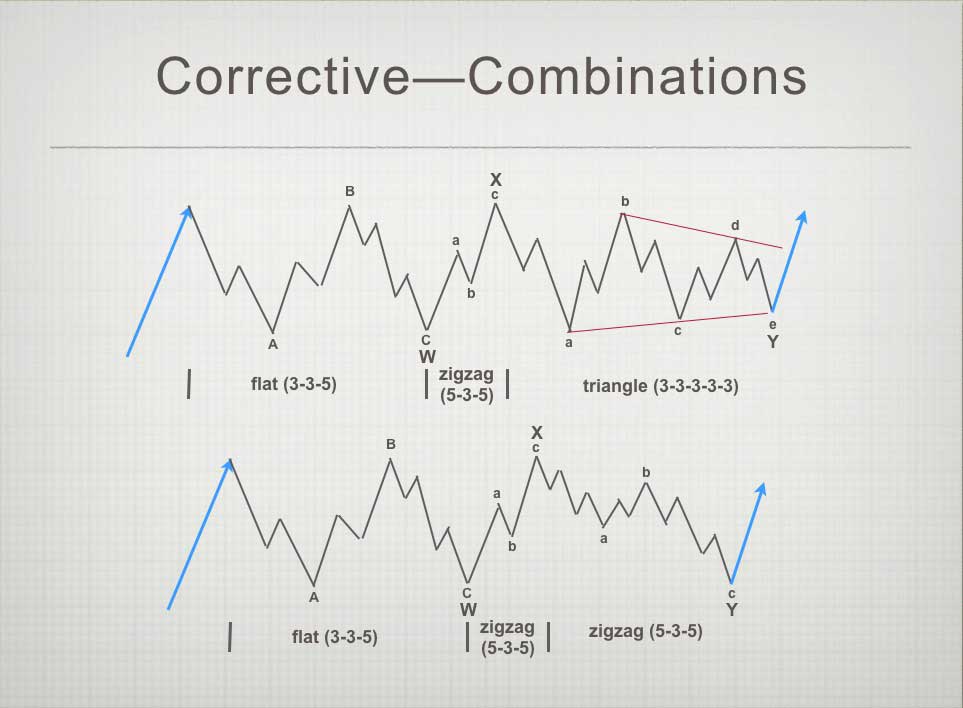Fourth Wave Combinations
Fourth waves at this high level of trend typically form combination waves. What this means is that more than one Elliott wave corrective pattern traces out before the larger correction is done. The secret to trading it is to figure out each of the patterns before they’re complete. It’s a difficult take but it’s made a little easier due to the fact that almost all patterns have fibonacci relationships to other patterns.
This weekend, I thought it appropriate to spend a little time on combination waves, because we’re seeing one unfold in the current bearish fourth wave.
Above is a chart showing combinations and the patterns that make them out. The two combination patterns above are each referred to as “triple threes.” That’s because corrective waves form a 3 wave pattern overall and there are three corrective patterns in each of the two examples above.
Let’s look at the structure of these Elliott wave patterns that make up a combination. A flat is 3 waves (3-3-5), a zigzag is 3 waves (5-3-5), and a triangle (3-3-3-3-3) is counted as three waves, even thought there are 5 waves (each wave in three sub-waves). I know, all very complicated. But as you study Elliott waves and see these patterns over and over again, they begin to make more sense the more you see them play out.
There are also “double threes,” which only contain two patterns. You’re allowed a maximum of three patterns in a fourth wave corrective retrace.
NOTE: The waves depicted above are horizontal in direction, but in reality, they would either slope up or down, depending in whether we’re in a bull or bear market.
Fourth waves are always corrective. At small degree (smaller waves), there may be only one pattern that plays out. At this high degree, you can pretty well count on at least two patterns (a “double three”).
We’ve completed two patters, by the looks of it, a double zigzag (although the waves down are not clear enough to ensure that’s it’s not a single zigzag). I’m expecting a major bounce as a B wave and then a final pattern to the downside. The next pattern could be a zigzag, a flat, or a triangle. The probability is that it will be another zigzag, or a triangle.




